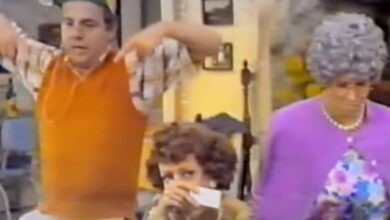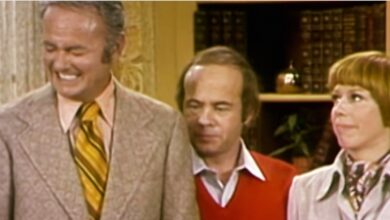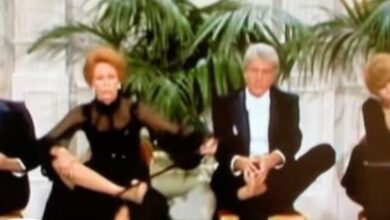Linda Ronstadt’s “Blue Bayou” Redefined Pop-Country Crossovers and Cemented Her Legacy in 1977
When Linda Ronstadt released “Blue Bayou” in August of 1977, it marked a defining moment not only in her own career but in the broader evolution of American music. Her lush, emotionally-charged version of the song, originally written and recorded by Roy Orbison and Joe Melson in 1961, became an instant classic. Blending country melancholy with pop elegance, Ronstadt’s cover reached No. 3 on the Billboard Hot 100 and topped the Adult Contemporary chart. Its haunting atmosphere and vocal vulnerability introduced millions to a deeper, more introspective version of country-pop—one that could move effortlessly between genres and radio formats.
By that point in her career, Linda Ronstadt had already established herself as one of the premier female voices of the 1970s. A product of Tucson, Arizona, she had begun singing traditional Mexican music with her family before moving to Los Angeles and joining the folk-rock group The Stone Poneys. Her early solo albums displayed a taste for reinterpretation—reviving old hits and giving them new emotional depth. But what truly set Ronstadt apart was the singular strength and clarity of her voice: she could soar like a pop diva one moment and lament like a country balladeer the next, all while maintaining a deep emotional authenticity.
“Blue Bayou” was a song she had wanted to record for years. Inspired by her admiration for Roy Orbison, whose trembling tenor had originally made the song a minor hit in the early ’60s, Ronstadt saw potential to reinterpret the song through a feminine lens. She often spoke of being drawn to themes of longing and homesickness—sentiments that mirrored her own life as a woman constantly touring, frequently displaced from her Arizona roots. In “Blue Bayou,” she found a lyrical metaphor for emotional refuge, a distant place one dreams of returning to, even if it only exists in memory.
The production, overseen by longtime collaborator Peter Asher, was a study in sonic elegance. Ronstadt’s version slowed the tempo compared to Orbison’s original, leaning into the song’s wistful quality. The instrumentation featured shimmering acoustic guitars, restrained strings, and understated percussion, all of which gave her voice ample room to breathe. The arrangement avoided any genre clichés, landing instead in a dreamy middle ground between country, pop, and folk. Ronstadt’s vocal performance was intimate yet grand, her phrasing imbued with heartache and restraint. Every note felt lived-in.
Critics responded warmly to the track, hailing it as one of the finest vocal performances of her career. On the charts, “Blue Bayou” spent 23 weeks climbing, ultimately peaking just shy of the top at No. 3 on the Billboard Hot 100. It was also a No. 1 hit on the Easy Listening chart and reached No. 2 on the Country chart, a rare trifecta that spoke to the song’s cross-genre resonance. Ronstadt earned a Grammy nomination for Best Pop Vocal Performance, Female, and though she lost to Barbra Streisand, the song’s impact was undeniable.
Culturally, “Blue Bayou” became something of a generational touchstone. It was a radio staple throughout the late ’70s and early ’80s, embraced by both AM and FM audiences. The song became a favorite for late-night playlists, jukeboxes, and emotional montages. In an era when musical identities were often rigidly defined, Ronstadt’s seamless blend of styles helped break down artificial boundaries. Her version made it acceptable for pop audiences to explore country sounds and for country fans to embrace a more polished, crossover aesthetic.
For Ronstadt herself, “Blue Bayou” marked a turning point. Though she had already seen commercial success, this song expanded her international reach. She began touring more extensively overseas, and the track charted in several countries including Canada and Australia. It also brought her new audiences who hadn’t connected with her earlier rock-oriented material. The song would become one of her most requested in live performances and a defining staple of her setlists for decades.
Its influence on other artists was just as profound. Ronstadt’s success with “Blue Bayou” encouraged other pop and rock musicians to explore country-influenced sounds—think of artists like Juice Newton, The Eagles, or even Kenny Rogers collaborating with pop producers. Her boldness in crossing genre lines opened creative doors, especially for female vocalists who had previously been pigeonholed into narrow categories.
Over the years, the song has been covered by a wide variety of artists, but few have come close to the emotional gravitas of Ronstadt’s interpretation. Everyone from LeAnn Rimes to Lana Del Rey has referenced her version as an influence. Even Roy Orbison, during his later revival in the 1980s, acknowledged that Ronstadt had given new life to his song, reaching audiences he never could have imagined back in 1963.
At the time of the song’s release, Ronstadt was also navigating a particularly grueling phase of her personal life—balancing constant touring with intense media attention and the pressures of being one of the few female stars in a male-dominated rock world. “Blue Bayou” gave her a moment of artistic stillness amidst the chaos. It was a vulnerable confession in a world of big stadium performances and radio hits.
Decades later, “Blue Bayou” remains one of Ronstadt’s most beloved tracks. It continues to receive airplay, has been used in countless film soundtracks and TV shows, and was inducted into the Grammy Hall of Fame. It is one of the clearest examples of how a cover song—when treated with vision and respect—can surpass even the original in cultural weight.
The track also anticipated the eventual mainstream embrace of genre-fluid music. Today’s artists frequently blend styles without hesitation, and many—like Kacey Musgraves, Taylor Swift, or Brandi Carlile—owe a debt to Ronstadt’s fearless fusion of country heart and pop sensibility. “Blue Bayou” didn’t just blend genres—it legitimized doing so.
In 2013, when Linda Ronstadt was inducted into the Rock & Roll Hall of Fame, “Blue Bayou” was prominently featured in the retrospective of her career. Though Parkinson’s disease had by then silenced her voice, the song remained a living testament to her artistry. It spoke volumes not only about what she could sing, but how she made people feel when she did.
Ultimately, “Blue Bayou” is remembered not for flashy production or gimmicks, but for its emotional honesty. It captured a universal ache—a yearning for home, for peace, for something lost. And in Linda Ronstadt’s hands, it became a masterpiece of restraint, elegance, and enduring musical beauty. Her voice made that far-off place feel close, if only for three perfect minutes.





